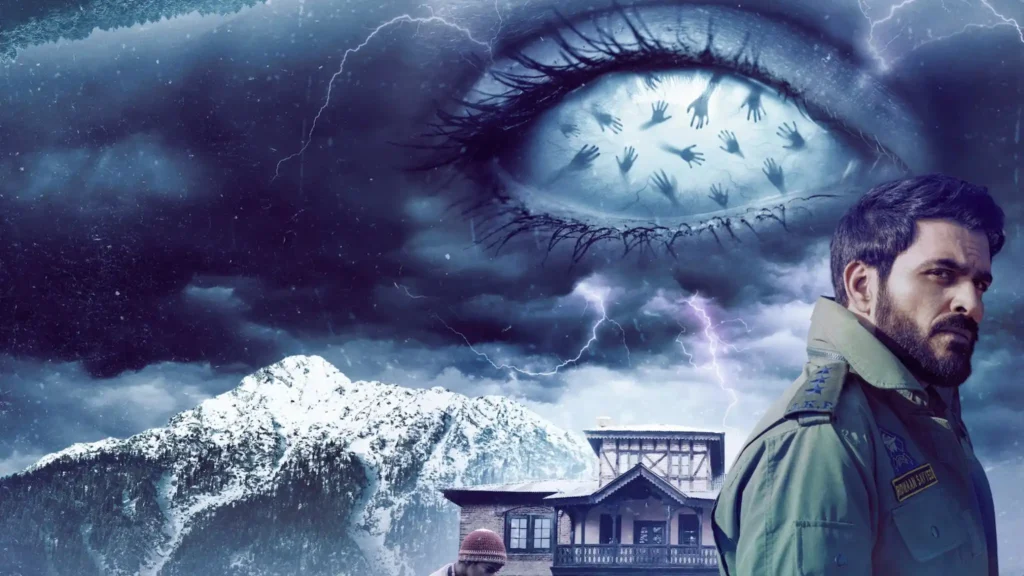
First impressions aren’t everything, but Baramulla makes some pretty good ones. Aditya Suhas Jambhale’s Netflix movie – one of the better Hindi releases in a while – creates a stellar atmosphere in a small handful of scenes, establishing the fundamentals of the plot and specifics of the tone rather well. Fleshy folkloric horror is draped on the skeleton of a police procedural, with all the requisite jump scares, creepy shadows, and lurking figures you’d probably expect. It’s unoriginal, granted, but effectively, confidently presented.
It doesn’t stay like this, though. Eventually, the plot gives way to a more creeping, corporeal dread, less about ghosts and ghouls than real political and historical horrors, frightening in the way they evoke primitive, evolutionary terrors of exile and subjugation. You’d think – and in most cases you’d probably be right – that this meatier material is preferable to bump-in-the-night haunted-house horror, but the script – from Jambhale and Aditya Dhar – lacks the nuance and sophistication to properly unpack it.
DSP Ridwaan Sayyed (Manav Kaul) is summoned to Baramulla, a picturesque town in Kashmir, to investigate a string of disappearances of local children, who’re vanishing without any trace beyond the neat lock of scissored hair they leave behind. While he’s in town, he and his family – wife Gulnaar (Bhasha Sumbli) and children Noorie (Arista Mehta) and Ayaan (Rohaan Singh) – are put up in a house that immediately reveals itself to be haunted, leaving Ridwaan to grapple with both his professional and personal lives, while nursing the trauma of semi-recent violence.

This stuff all works rather well. An opening that finds a young boy being coaxed into the chest of a travelling magician, only to disappear entirely, is a nice note to start on, and the scares around the house are familiar but capable. There’s an engaging ramshackle geography to the place – everything creaks, leans, and casts eerie shadows up and down the walls – that embellishes the usual spooky fare. Kaul and Sumbli really sell it, too, and Arista Mehta’s Noorie is one of the more believable child characters in a while. The scenes Ridwaan and Noorie share are especially good, since a lot of the movie’s internal conflict – the pain and weight of memory, grief, trauma, and responsibility – runs directly through them.
Baramulla is Kaul’s movie as far as the marketing is concerned, but it really belongs to Gulnaar, who at one point turns up and literally has to explain the plot to Ridwaan because he can’t get out of his own way. Her willingness to engage with the supernatural elements and the present-day plot’s connection to the house they’re staying in provides the key breakthrough that links the disappearances to the years prior exodus of Kashmiri Pandits from the contested, Muslim-majority Kashmir Valley. Even a late pivot into more overt action territory positions Gulnaar as the primary avatar of the righteous anger at the movie’s core.
But this late pivot is part of the problem. The final act, while emotionally powerful, especially in an extended flashback sequence that merges seamlessly with the present-day events to explain the root of the haunted house’s terrible trauma, is forced to awkwardly incorporate brutal historical injustice with shadow demons and CGI dogs. It’s ill-fitting and lends a note of unintentional silliness to what should be an extremely powerful stretch of filmmaking.
The intentions are very admirable, and there’s a coda devoting the movie to the displaced Pandits who built lives for themselves outside of the valley but still long for a return to their homeland. These are serious matters, and while highlighting them in any work seems to be of value in a broad sense, reducing such a thing to exploded notions of good and evil, right and wrong, us and them, is a simplistic way of doing so. The recurring image of a bruised flower is a more effective motif to highlight the region’s state of enduring flux, still present and rooted in the land but cowed and unable to flourish. If only the same subtlety had been preserved elsewhere.
RELATED:
- Baramulla Ending Explained


